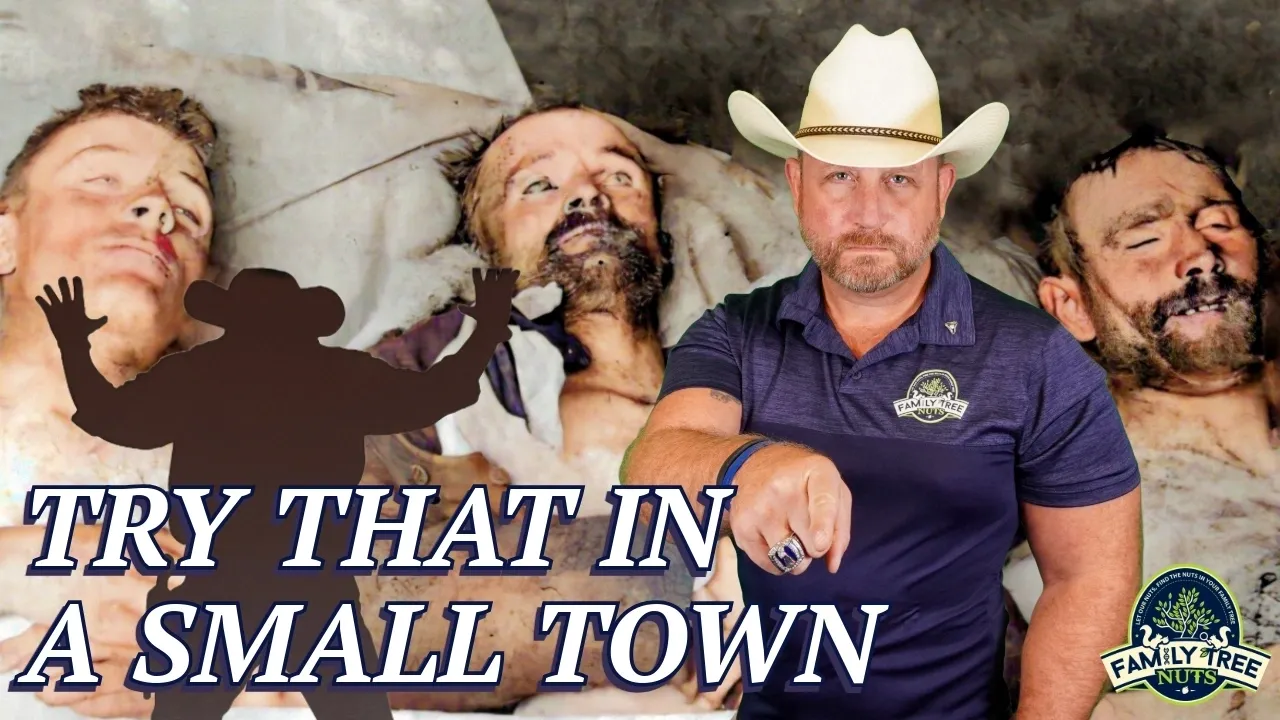
Old West Bank Robbery Foiled by Citizens
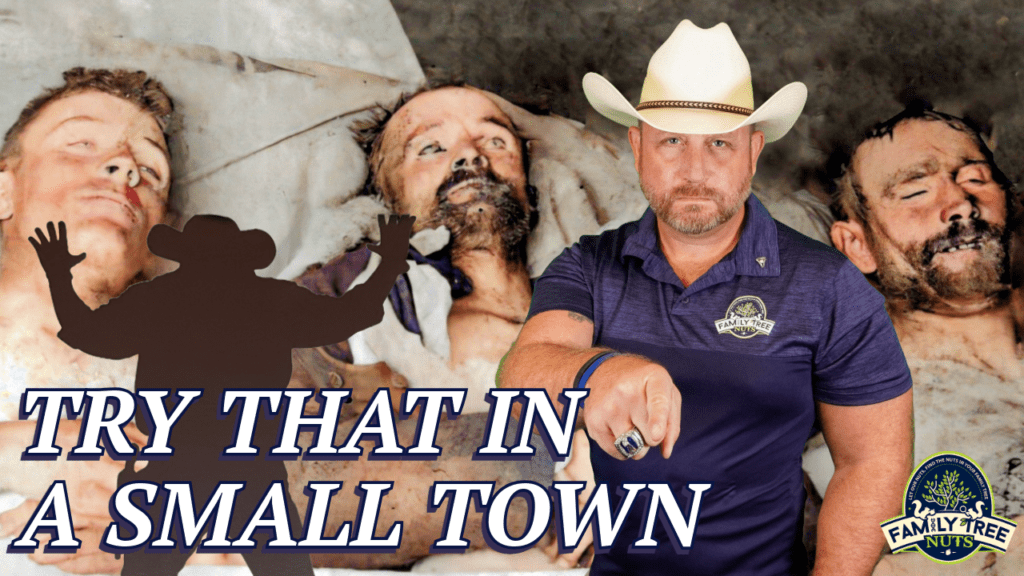
Most of us have heard the song “Try that in a small town” by Jason Aldean, and this story is a perfect example of the wrong town that outlaws picked for their mischief. The quote that has been used for this event is “This is what happens when citizens preserve law and order in their town”. In the Old West town of Meeker, Colorado, three Outlaws robbed the bank and then had to face the wrath of the local armed citizens who were very eager to defend their town. In this video, I’ll show you the sights, and tell you the story of this wild event of some unlucky outlaws that t
ried it in the wrong small town.

Pano photo from the air of Meeker, Colorado, the site of famous 1896 Old West Bank Robbery.
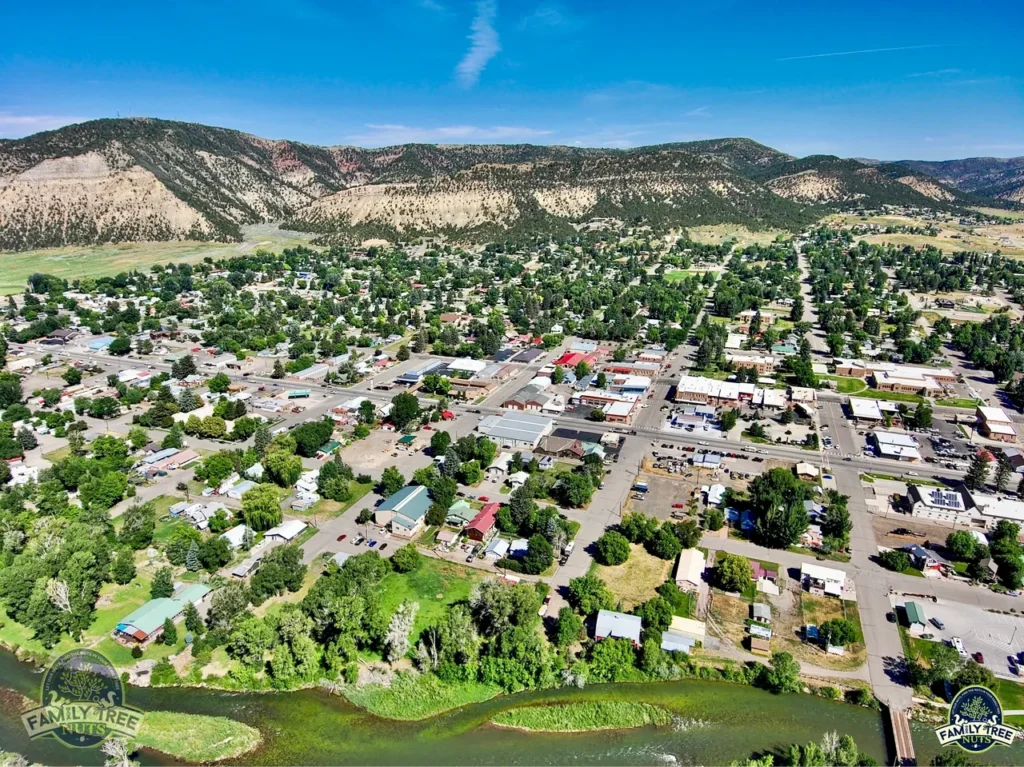
Recently visited the location of this robbery attempt, in Meeker, Colorado, and I wanted to show you the sights, and share the story with all of you. At Family Tree Nuts, we build family trees for clients that either don’t know how, don’t have the time, or don’t want to pay those expensive membership fees. We’d love to honor your ancestors for you. We also make history videos all over the United States, and a few countries, so if you like videos like these, be sure to subscribe to our channel.
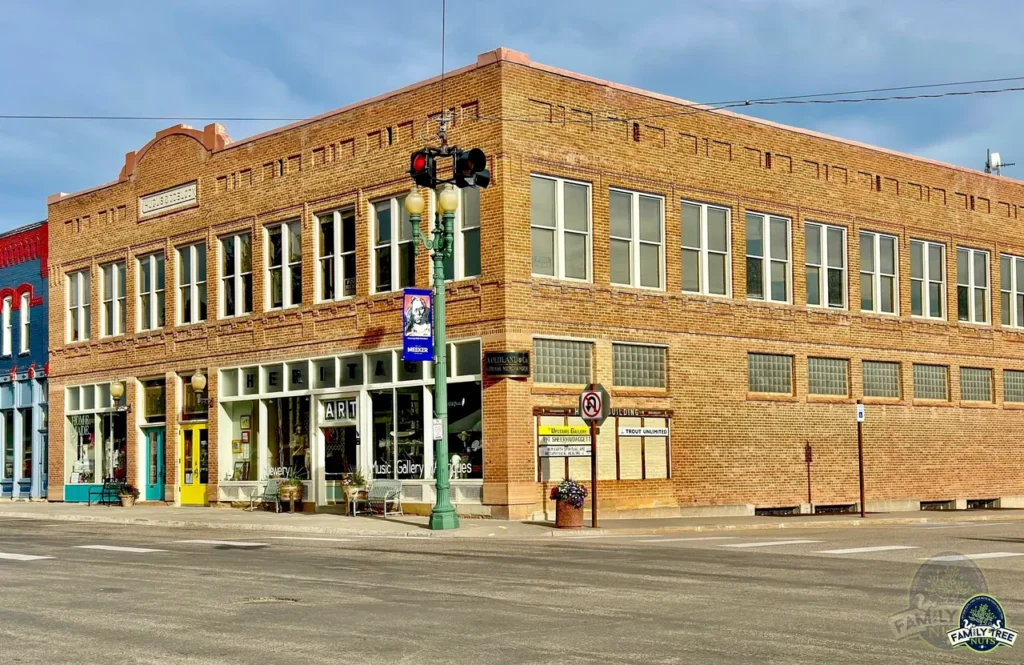
Now back to the Old West bank robbery. Before I begin the story, I should mention that there are slightly differing accounts of what happened that day, and even the names of some of the characters differ. Like so many other events in history, overtime the story gets clouded. We have tried our best to compare the accounts and streamline the details here in this video.
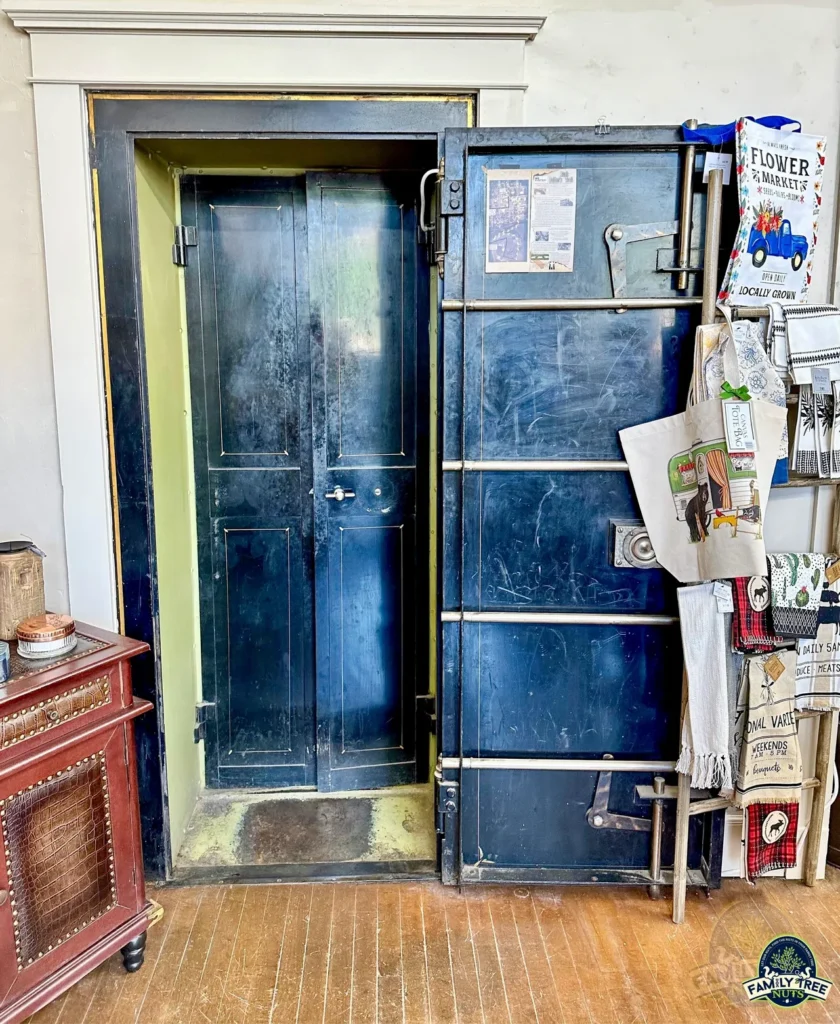
It was 3 October 1896, about 3 o’clock in the afternoon when three outlaws rode into town from the south down by the White River. They tied their horses at the freight wagon corral behind the J.W. Hugus & Company building which was being used as a general store and housed the Bank of Meeker. They entered the building and took positions at the front and side doors. Outlaw “The Kid” Pierce covered the front door, and outlaw Jim Shirley covered the side door. A Mrs. Wildhack tried to come in the front door to do some shopping, but The Kid told her that she couldn’t go in.

Joe Rooney, a clerk at the Meeker Hotel was making a deposit. When Rooney finished his business, the action was on. Outlaw Jim Shirley shouted from the side door for everyone to get their hands in the air. The leader George Bain stuck his pistol between the brass railing and fired a shot near the head of the assistant cashier David Smith, and when he didn’t move fast enough he fired a second shot. This may not have been the smartest thing to do because the town heard the shots. A.C. Moulton, the manager of the J.W. Hugus and Company came out from the back room. Robber Jim Shirly then pointed his barrel at Moulton, who later stated that the gun barrel was big enough for him to sleep in!
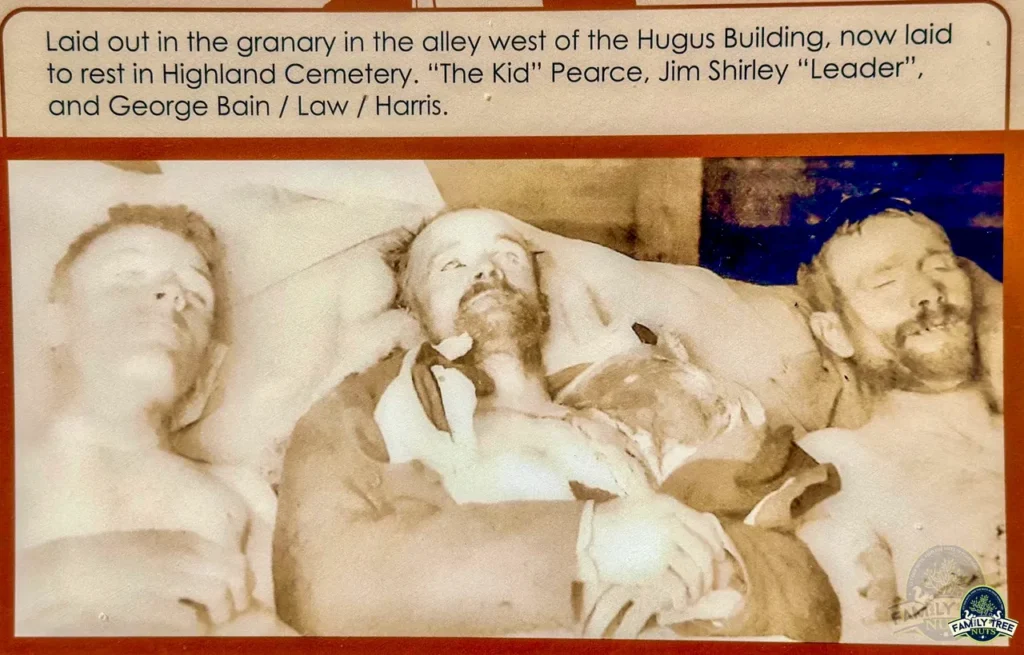
At this same time outside, a man named Phil Barnhart was about to enter the bank when he saw a man in front of him throw up his hands. Barnhart then ran down the street sounding the alarm, “get your guns, the bank is being robbed!”. Another man, Tom Shervin from the Meeker Hotel heard the shots and informed a passerby C.J. Duffy, and the two of them ran throughout the town to give the alarm.
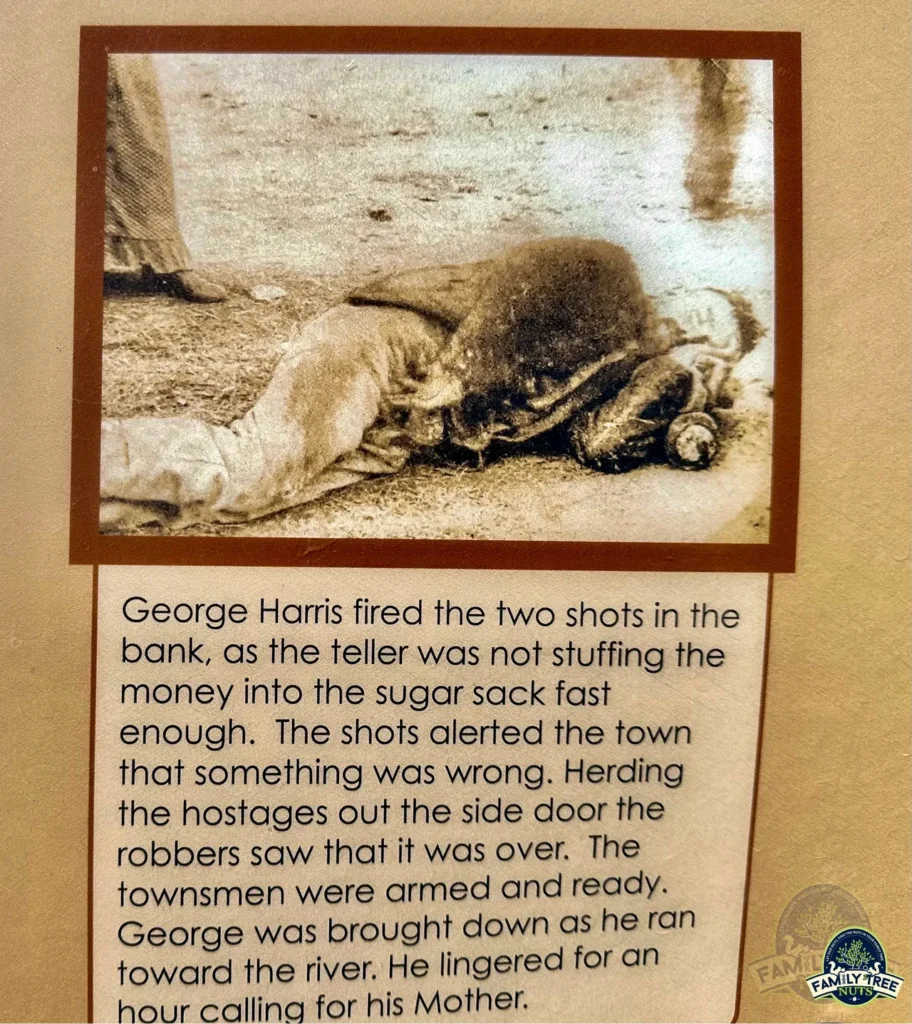
Bain tried to force the bank door open but when he realized that it was locked, he grabbed Mr. Rooney, held him at gunpoint and marched him to the bank office door. He told the Manager Mr. Moulton “Here, Mr. Cashier, we want you!” and then told them to unlock the door. Bain went inside and asked Mouton where the money was. The cashier pointed to the cash drawer and told him to help himself. Bain shoved an estimated $600 to $1,600 into an old sugar sack and then told the staff to get with the other hostages. The robbers collected the weapons of the nine hostages, armed themselves with three of the rifles, and broke the remaining weapons. This process took about five minutes to do, which was the robbers second big mistake because it allowed time for the townsfolk to gather.
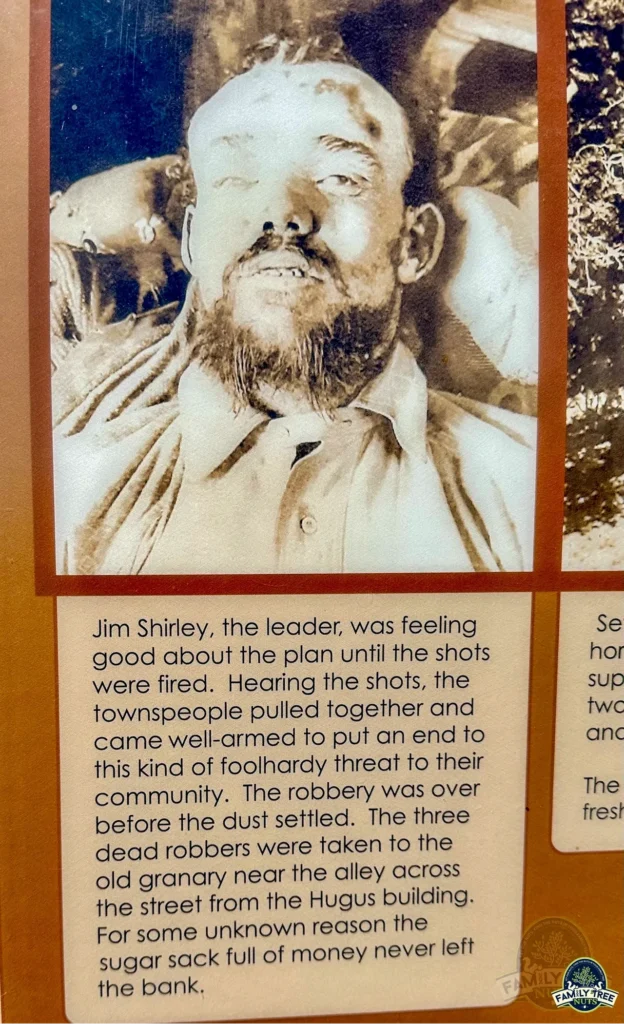
The outlaws marched the captives out the side door and started to the alley where their horses were tied. As soon as they got outside, they saw the armed townsfolk and used the hostages as a shield to get to the corral. The Deputy Game Warden William H. “Bill” Clark was also a teacher and heard the shots in his classroom. He told the children to stay put and went to investigate. He took a position near the grain warehouse, and when the robbers and hostages came out, he was spotted by one of the robbers and was shot in the right side of his chest about two inches to right of his right nipple. They say Bill was a bit of a large man, and later joked that if he had been fifty pound lighter, he wouldn’t have been hit!
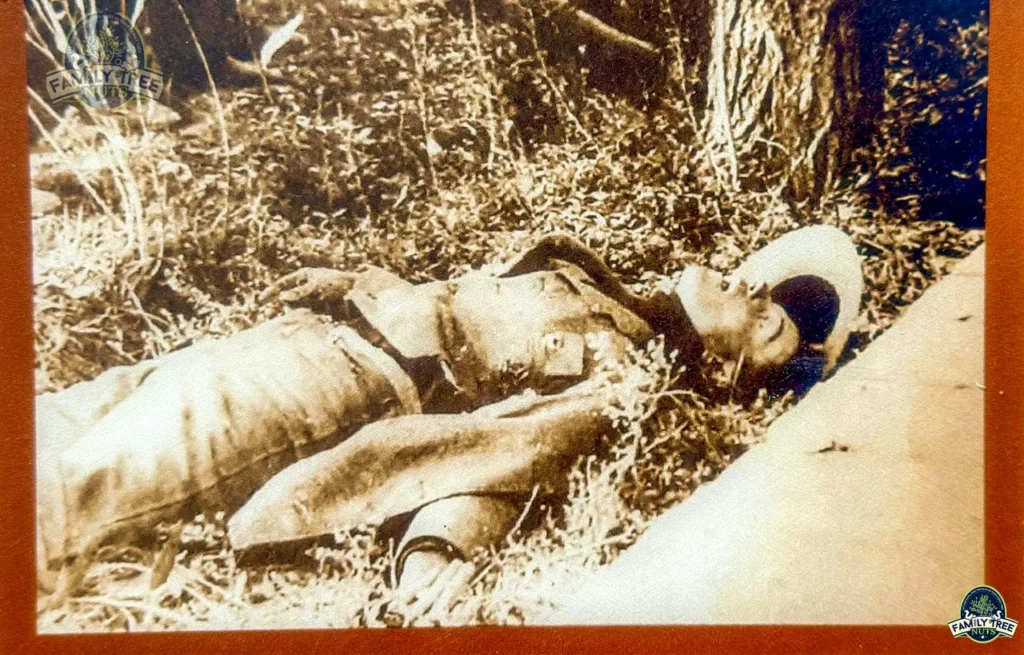
The outlaws made it to their horses and while two of the outlaws attempted to untie them, The Kid stood guard on the hostages. One of the hostages Victor Dykeman, took off and ran. The kid fired and shot Dykeman in the right arm and put three shots in his hat. That’s when the townsfolk unloaded. One of the bank employees Mr. Booth was winged in the side by a bullet, and a customer W.P. Herrick had a finger shot off by a passing bullet.
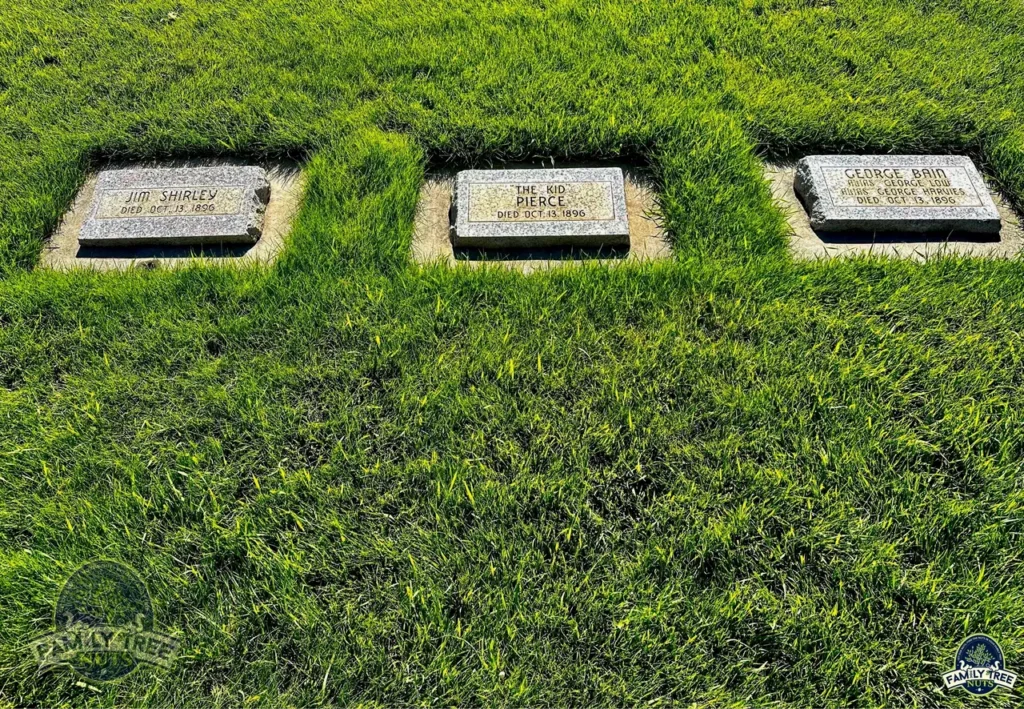
A citizen named Ben Nichols was credited with shooting The Kid who died instantly with five bullets in him. Citizen Simp Harp shot Shirly through the heart critically wounding him. While Shirly went down he unloaded his six gun at the townsfolk. So many bullets flew that one of the outlaws horses was killed. Seeing both of his partners shot, Bain made a run for it to the river but was shot in the back by Simp Harp. The men tied Bain around the neck tightly to a post.

A Mrs. McAdow who ran the restaurant nearby, had the two dying men, Shirley and Bain, brought to her house and put pillows under their heads. One of the towns people started kicking and cussing the injured men when Mrs. McAdow pushed him back, struck him with her fists, and said, “You brute, don’t you dare touch a dying man”. The townsfolk wanted to hang the two dying men immediately, but Mrs. McAdow interceded. Shirley died quickly and George Bain died an hour later. They say that just before he died he cried out for his mother. They took the outlaws across the street to the mill and put them on display for the townsfolk to see. The next day they were buried in Highland Cemetery, and they are among the first people buried here. Sixty-nine years later, in 1965, the town put grave markers down for the bank robbers.

Seventeen days after the event the robbers camp was found nearby on Strawberry Creek. There they found what were supposed to be fresh horses tied to a cedar tree, along with stashed rifles, bedrolls, and grub. One of the horses was dead and the other two were in bad shape due to no food and water. It was clear that the robbers planned to ride hard to this location, grab the fresh horses and supplies and then make their getaway. The two weakened horses were nursed back to full health. One of the rifles is on display in the town museum.
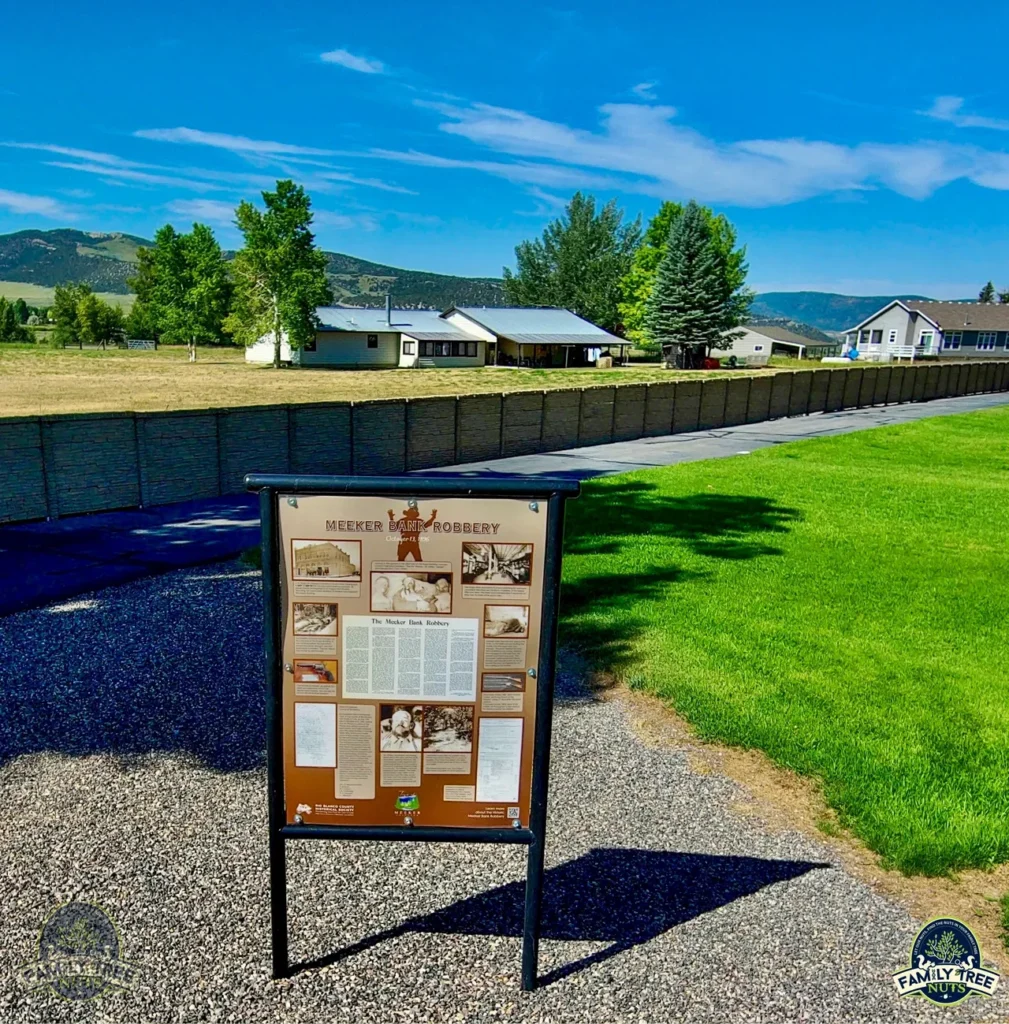
The situation was brought before the judge who ruled that the killings were justified to protect life and property. Ben Nichols, the citizen that shot “The Kid”, Simp Harp, the citizen that shot the other two robbers, and Rube Ball were later presented with rifles from the Bank of Meeker as a reward for their action against the bank. Ben Nichols rifle is on display at the town museum. All four citizens injured in the ordeal made full recoveries. Several accounts were written by the citizens giving their account of what happened.
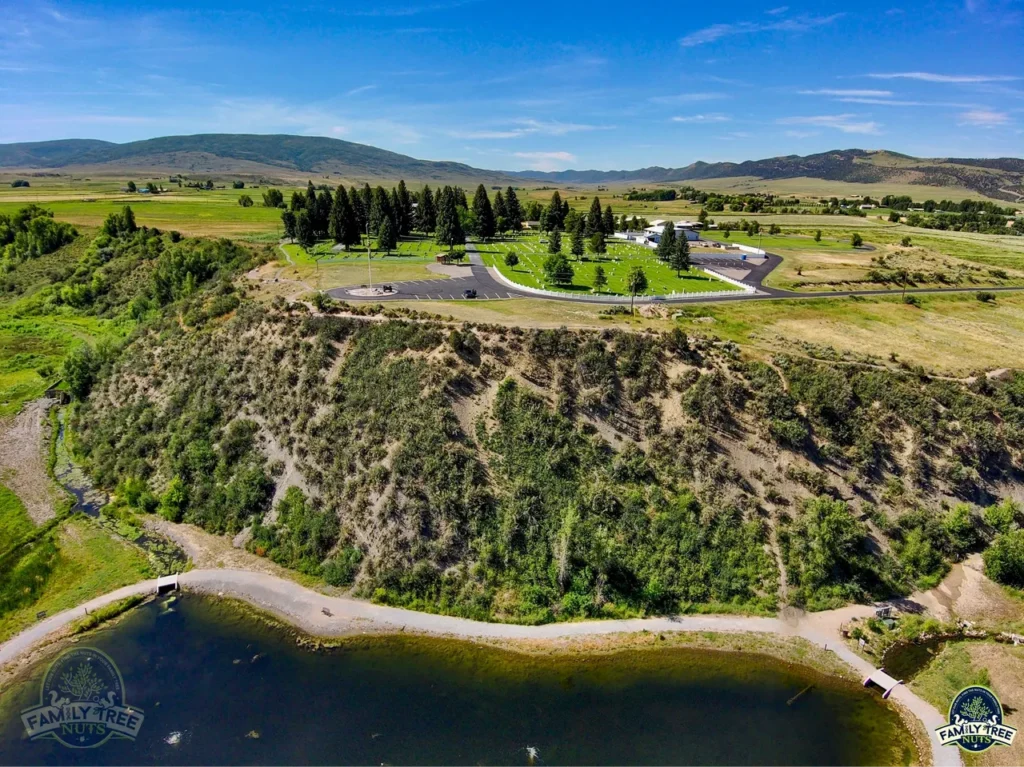
George Bain, the last outlaw to die, gave false names of the men. He said that the leader Jim Shirley, was Charles Jones, “The Kid” Pierce was Billy Smith, and said his name was George Harris, George Harvies, and was also called George Low. Some of the townsfolk said that they recognized Bain who may have worked at one of the local ranches for a time. Some said the leader was actually the famous bank robber Tom McCarty, but no one could be sure. The robbers exact identity may always be a mystery. By the way, in an ironic twist of fate, the stolen money in the sugar sack never left the bank. In all the confusion, the prize got left behind.
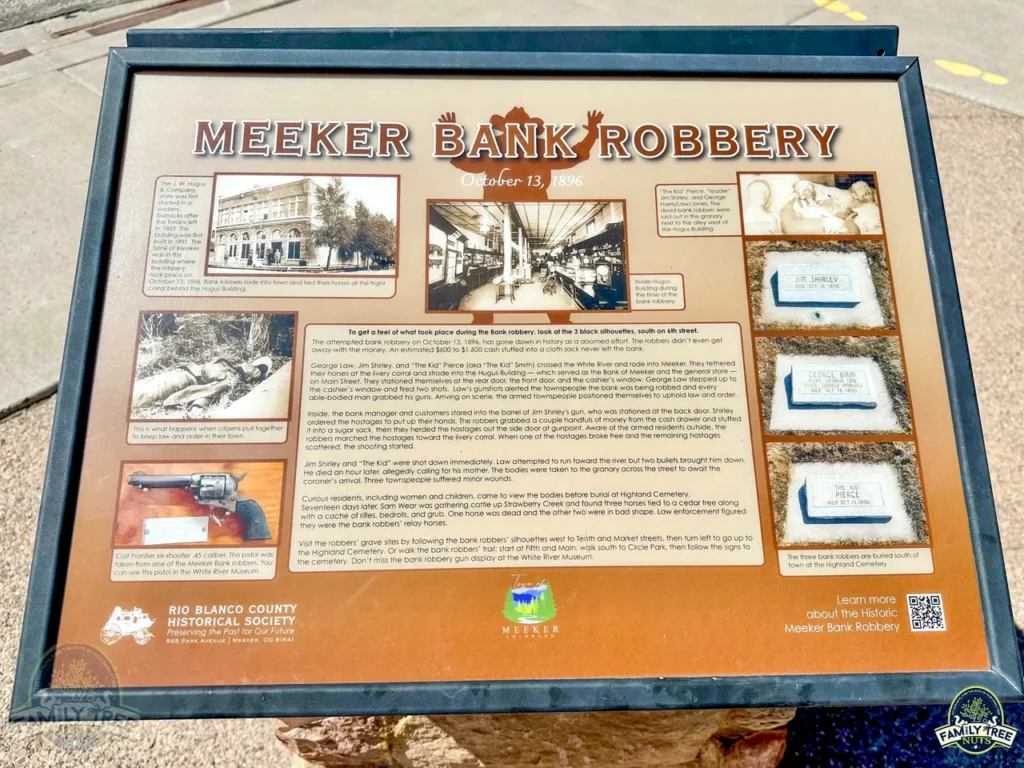
If you get the chance to visit Meeker, be sure to check out other historic places Meeker has to offer. The yellow footprints in town will lead you to the historic stops. First, you will want to visit the scene of our story, the J.W. Hugus & Company building. It started as an Indian trading post in 1879, and the brick building was built in 1889. You can visit the location today which is currently a gift store. Inside the store is the original vault for the Meeker Bank at the time of the robbery. Today it is used as a closet. You will want to see the Meeker Hotel which has been housed in this building since 1896, the same year as the robbery. Famous people to come here are then Vice-President elect Teddy Roosevelt and Billy The Kid. Make sure you have plenty of time when you check out the first-class White River Museum, it is loaded with historical items. On display here is one of the robbers pistols, a colt .45, and two rifles related to the event.
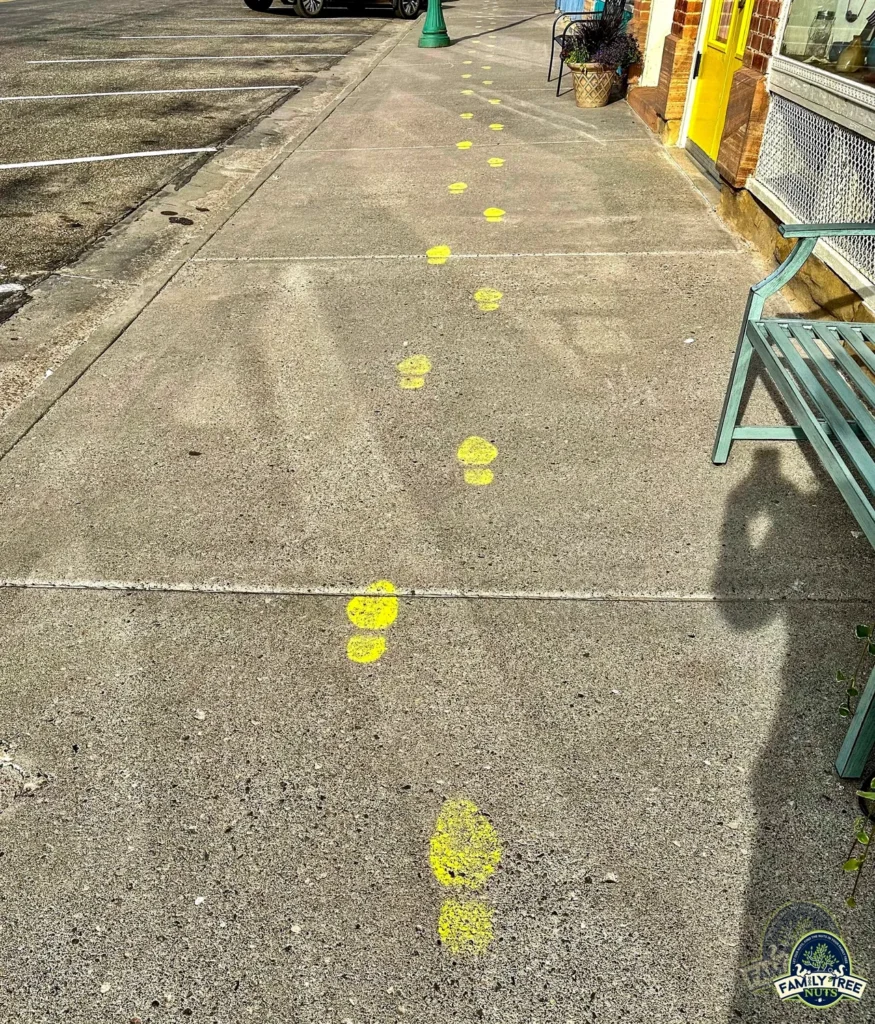
Outside of town is a historic park that displays replica cabins that the first settlers to the area lived in. The town is also the site of the Meeker Massacre. In 1879, after a battle with the U.S. Army, the Ute Indians attacked and killed every man who worked at the White River Indian Agency, including Indian Agent Nathan Meeker, who was known for bringing irrigation to the west. As a result of this action, the Ute Indians lost substantial territory and were confined to three reservations that still exist today. Be sure to see our video about this historical event.
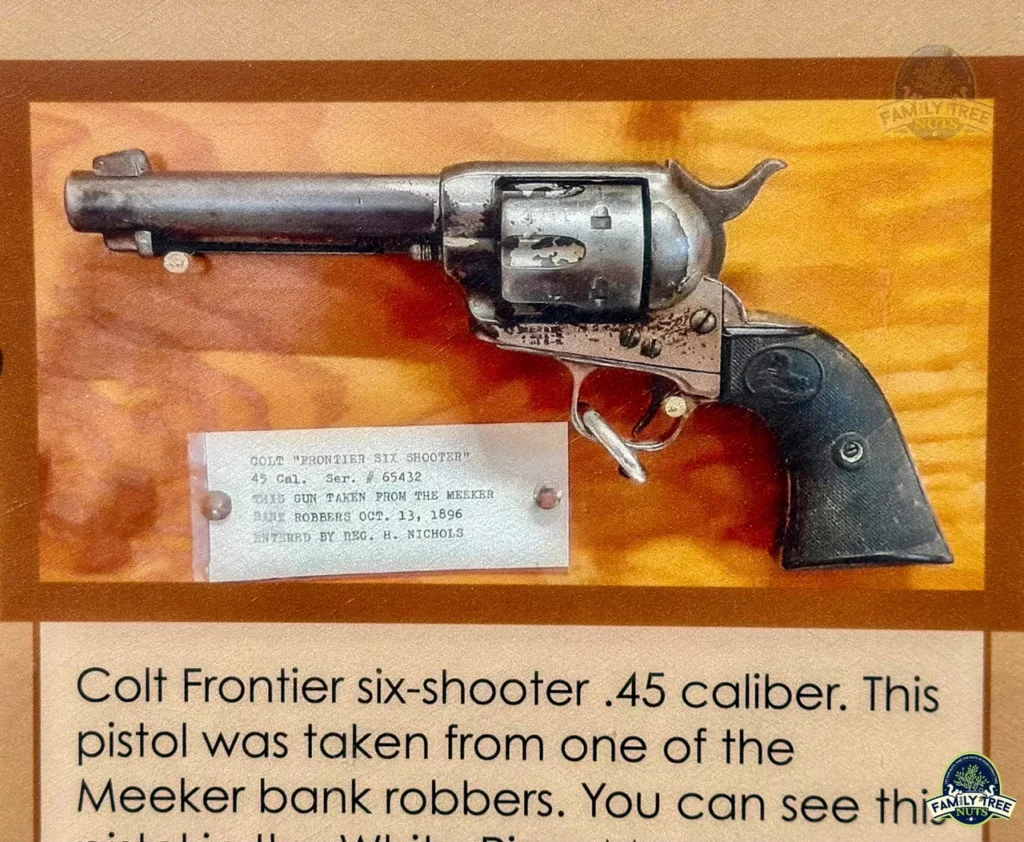
So now we know the story of this Old West bank robbery attempt, one that should have never been tried in that small town. What do you think? Did you know that this historical treasure existed? What are your thoughts about the towns citizens who rallied and defended the bank? Have you ever been here, or do you now plan to visit? We’d love to hear what you have to say in the comments below. We are proud to share this story from history with all of you. Be sure to see our video from her below.
-Col. Russ Carson, Jr, Founder, Family Tree Nuts
